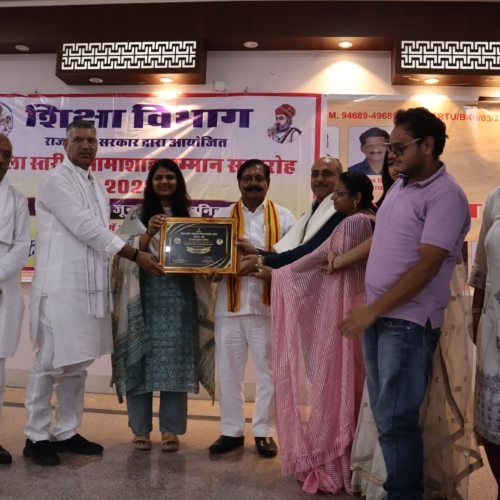
The Ghost Shark is being jointly developed. This was the first prototype’s unveiling at Garden Island, Sydney in April this year. (Anduril Australia)
Australia and Anduril jointly invest to promote Ghost Shark production
With its new nuclear-powered submarines years away from fructifying into any sort of capability, Australia is pouring money into extra-large autonomous underwater vehicles (XL-AUV) that will help take up the underwater slack.
The Australian government announced on 5 August that it and Anduril Australia had concluded a co-funding early-works contract that saw each party invest A$20.1 million (US$13.3 million), in order to accelerate production of Ghost Shark long-range AUVs.
Canberra said the money would “scale the sovereign supply chain and build infrastructure to transition the Ghost Shark programme from prototype development to production”.
The additional funds will help the Australian industry supply chain to grow in lockstep with Anduril Australia. Already, 42 companies have joined the supply chain, and “this will increase as the programme scales,” a company spokesperson explained.
Anduril Australia will construct a local manufacturing facility too, though it declined to share with T.I.N. its location. However, the Sydney-headquartered firm did say, “We’re planning to have the capability to manufacture extra-large AUVs at scale in Australia.”

The first production vessel for the Royal Australian Navy (RAN) should roll out before the end of 2025.
Each party had previously poured in A$70 million (US$46.1 million) via an incentive contract to develop and build three Ghost Shark prototypes. The first vessel was unveiled on 18 April, a year ahead of schedule, while the third should be delivered by mid-2025.
The boxy, black-coloured Ghost Shark is based on Anduril’s 2.72-tonne and 5.8m-long Dive-LD submersible, this design inherited after Anduril acquired Dive Technologies in 2022. The Dive-LD can stay submerged for ten days and dive to 6,000m. Anduril is also supplying the type to the US Navy after winning a competition last year.
Anduril Australia declined to provide Ghost Shark specifications because of sensitivities. Nonetheless, the company did say “Ghost Shark’s real capability advancement is in payload flexibility and autonomy to unlock new missions currently unexplored in the subsea domain – both for defence and commercial-use cases”.
Defence ambiguously said the XL-AUV would offer a “cost-effective, persistent intelligence, surveillance, reconnaissance and strike undersea capability,” though the RAN has not disclosed what sensor and weapon payloads are being considered.
“The Ghost Shark programme will provide a long-range autonomous capability that can perform advanced intelligence, surveillance reconnaissance and targeting operations, providing significant potential for asymmetric advantage in high-risk environments. Ghost Shark will provide stealth, disruptive mass and persistence, optimised for the Indo-Pacific archipelagic environment.”
Anduril Australia
Furthermore, the company explained that these XL-AUVs can descend deeper than any manned submarine. They can perform many of the dull, dirty and dangerous missions traditionally done by crewed platforms, and also fulfil other missions deemed too risky for manned vessels.

There is no indication either as to how many Ghost Sharks Australia intends to procure, nor where they will be based, or how they will interoperate with existing RAN platforms.
Ghost Sharks can carry various payloads required by the RAN, plus its Lattice artificial intelligence-powered operating system allows it to communicate with other crewed and uncrewed platforms.
Its energy system is an evolution of that on the Dive-LD, permitting even longer missions than the latter’s 313nm range, the company said. The spokesperson added, “The XL-AUV will include ground-breaking collaborative autonomy capabilities enabled by Lattice. This level of sophistication is not seen in current autonomous undersea capabilities.”
The Ghost Shark was co-designed by Anduril, the RAN and Defence Science and Technology Group. The effort is being supported by the Advanced Strategic Capabilities Accelerator (ASCA), with the XL-AUV representing the innovation-promoting organisation’s first mission after it stood up in July 2023.
Chief Defence Scientist Professor Tanya Monro said, “Ghost Shark has been specifically designed for manufacturability, mass production and flexibility to create supply chain resilience.”
Anduril Australia’s spokesperson pointed out, “The marginal cost of Ghost Shark compared to traditional platforms, and the fact that it’s uncrewed, means that the XL-AUV can be ‘attritable’ in wartime. Its purpose is to go into harm’s way, to places and at times when there’s low appetite to risk human life, but where it will provide an asymmetric challenge to adversaries that will be difficult to address.”
The spokesperson added, “The Ghost Shark’s design will adapt rapidly as threats change. This is enabled by having highly skilled Australian engineers close to the manufacturing base in Australia. Anduril Australia has been working with a local supplier network across Australia to plan for manufacturing at scale.”
The new plant will also manufacture Ghost Sharks for international partners, plus a commercial variant. “The goal is not just to build these vehicles for the Royal Australian Navy, but also to build them for our allied export partners – countries like the US, UK, Japan, Singapore and South Korea, as well as those in Europe. This is, of course, subject to Australian export regulations, and we’re working with Defence’s export control office to ensure we comply with requirements.”
Depending on how they are employed, these XL-AUVs could be a useful force multiplier for the RAN’s underwater capabilities. The navy must rely on a backbone of six ageing Collins-class submarines for many years to come.
– End –













Add Comment